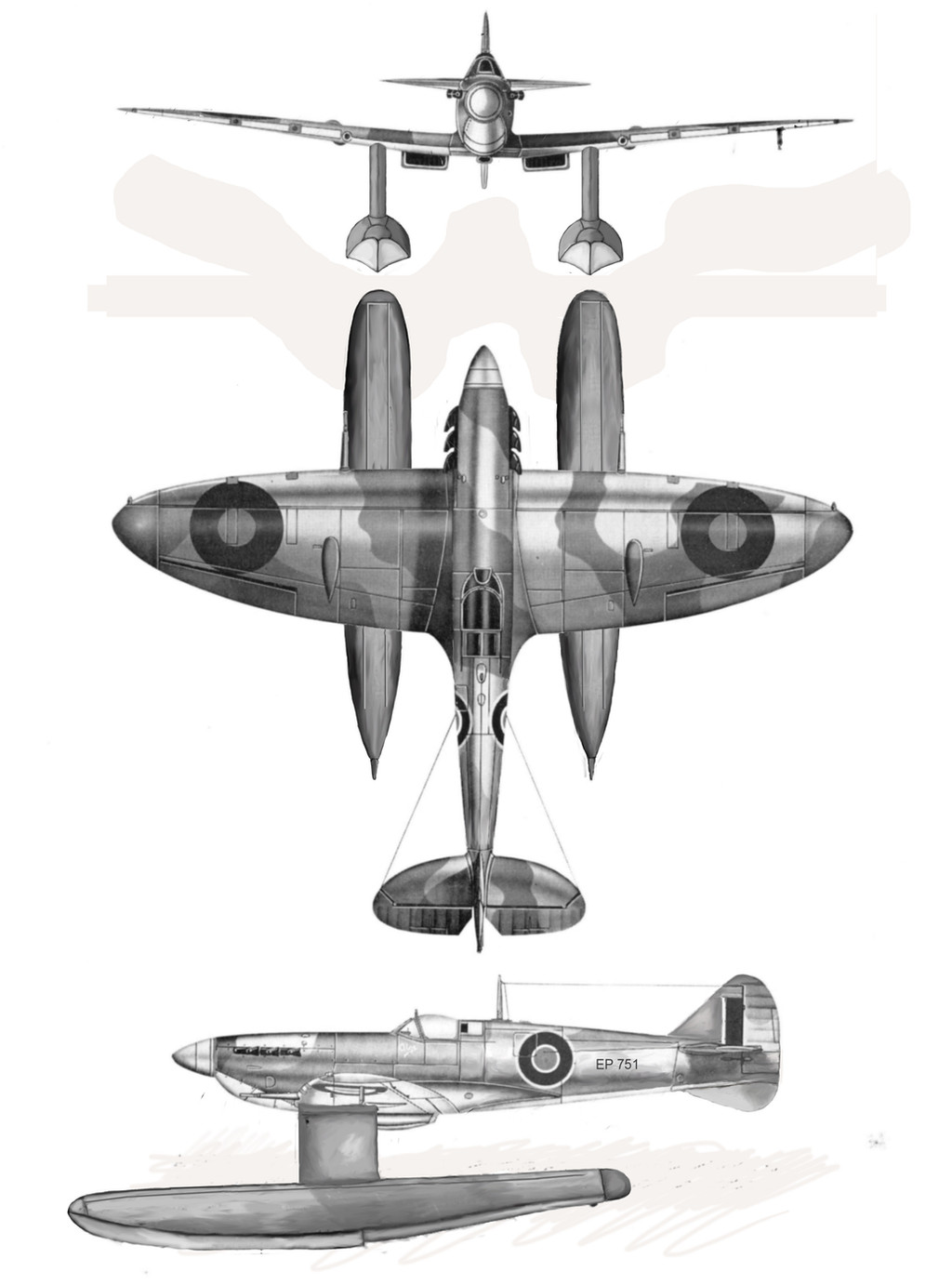HOME | DD
 NSLC — Spitfire Vb floatplane
NSLC — Spitfire Vb floatplane

Published: 2015-02-13 12:58:53 +0000 UTC; Views: 1346; Favourites: 23; Downloads: 13
Redirect to original
Description
Spitfire Mk. Vb floatplane
Dimensions:
Span F. V 36ft 10 in. (11.23m). length overall 35 ft. 4 in.(9,12m) height 15 ft. 6 in.(3.02) wing area 242 sq. ft.(22.48m2) Float: length 25ft 7 in (7.8 m) max beam 3ft 4 in.
Weights: Empty 6,014 lb. (3,062kg) normal load 7,580 lb. (2290kg)
Performance: Maximum speed 324 mph (521 km/h) at 19,500 ft. Max ceiling: 33,400 ft.(10.200 m).
Propeller: 4-blade Rotol constant-speed metal.
Power plant: Rolls-Royce Merlin 45 (1,470 hp.)
With the German invasion of Norway in April 1940 the RAF took an interest in the concept of using floatplane fighters in areas where airfields were not immediately available. To this end a Spitfire Mk I was converted with floats, but with the fall of Norway and the need for fighters in the Battle of Brittan the idea was put aside.
Test showed that the vertical tail surfaces would need to be enlarged to counterbalance the side area of the floats, otherwise the idea was sound.
In early 1942 the idea was revived and tree Mk Vb were converted with a pair of floats mounted on cantilever legs. The wing spars were specially strengthened to take the main flout strut attachments. And the tail surfaces were modified and enlarge and an additional fin, made of aluminum over a wooden form was added under the fuselage. The carburetor air intake was brought well forward to bee clear of sea spray.
The floats were divided in 9 watertight sections and a pneumatically operated water rudder was controlled by the normal landplane braking system. Water handling was good and it had a vice-free take-off at around 81-83 mph if the cross-wind was below 15mph.
The three seaplanes was send to Egypt and began training for at secured base in the Dodecanese Islands in the eastern Mediterranean off the coast of Turkey. The plan was to use Spitfire floatplanes hiding at a small, uninhabited island in the area to attack the transport aircraft that supplied the various Italian and German garrisons. A submarine would be used as a base and house the crews between missions. But the Luftwaffe reinforced the area just a few weeks prior to the planned start of the operation and the plains went into storage.
Related content
Comments: 9

Remember that the MC 72 flew at 440mph. with large floats (it also had a 2800-3300hp. 24 cylinder engine).
👍: 0 ⏩: 1

It is absolutely true but it was built for one purpose, speed, while the Spitfire was a fighting machine with a lot of ekstre equipment. The S6b flew at 407.5 m.p.h with 2300 hp.
It would be interesting to see what a clean Spitfire could handle.
👍: 0 ⏩: 1

The British tested a Spitfire in a terminal velocity dive, the propeller came off and I believe they claimed a speed of Mach 0.94. A Spiteful did 494mph, it had a three stage supercharger. Before the war the British attempted to break the air speed record with a modified Spitfire, something delayed the speed run and it never happened.
👍: 0 ⏩: 0

Cool plane! I saw a model of this in Japan and wish that we still had one in real life.
👍: 0 ⏩: 1

There was only three that were used in the Mediterranean. There was talk about making a version of the IX for use in Pacific War, but the US Navy had Aircraft carriers who could handle the same tasks.
👍: 0 ⏩: 0

There is a later model of the Spitfire that was also tested with floats.
👍: 0 ⏩: 1

Yes, they tested them on a MK IX for use in the Pacific Ocean, but it was never put in production.
👍: 0 ⏩: 0

Maybe those two large floats make the aircraft quite stable on the water, but I guess that they are a clear aerodynamic (and heavy) drag, so I would have used a central large float and two smaller (retractable?) ones under each wing instead, roughly following the configuration of other seaplane fighters like the A6M2N Rufe and the N1K1 Kyofu. But well- the Spit doesn´t look that bad with those two large floats, after all.
Very nice representation indeed
👍: 0 ⏩: 1

Thanks.
A large part of drag on a seaplane is from the boat-shaped underside of the body, so one large or two small ones are almost equal.
The speed of an Vb is 594 km/h and on the float-spit it is 521 km/h, if you dont wax the Spit and put a few bombs on it will have the same maximum speed as the float-spit.
No it dont look bad, but two floats is a supermarine speciality.
👍: 0 ⏩: 0

























